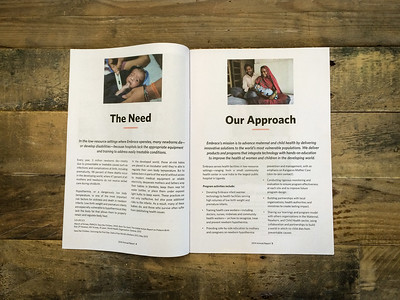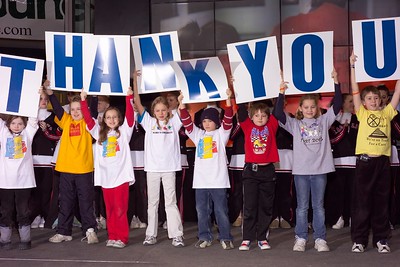You may be familiar with the Ask, Thank, Report, Repeat formula in fundraising. If not, you should be. Organizations that follow that tend to be more successful.
Many organizations just practice Ask, Ask, Ask. If that’s the case for you, are you raising the money you need? Because what’s most important is to thank and report before you ask for another donation. Going a step further, fundraising expert Penelope Burk recommends seven touches before asking for another gift.
Of course, formulas are good in theory, but you can’t just go through the motions. Some organizations practice Ask, Bore, Brag. If you do it well, the Ask, Thank, Report, Repeat formula can help you raise more money, build relationships, and boost your retention rate.
Asking for donations is not all or nothing
Many nonprofit organizations spend a lot of time asking and not that much on thanking and reporting.
At certain times of the year, such as GivingTuesday and year-end, nonprofits blast donors with a bunch of generic appeals. Other organizations are skittish about asking for money. They might bury the ask in the appeal or think donors don’t want to give during a recession or a pandemic (absolutely not true).
A good fundraising appeal starts with a story followed by a clear, prominent ask. You’ll want to repeat your ask at least once more in the appeal.
Your fundraising appeal shouldn’t be focused too much on your organization – rambling on about how great you are. Your organization may be great, but let your donors figure that out. Your donors are the ones who are great and they want to hear how they can help you make a difference for your clients/community.
Segment your appeal to the appropriate audience. Thank past donors or reference your relationship to a potential donor. Maybe they’re event attendees, volunteers, or friends of board members.
Address your appeal to a person and not Dear Friend.
Don’t use jargon or other language your donors won’t understand. Instead of saying we’re helping at-risk youth, say something like – With your support, our tutoring program can help more students graduate from high school on time.
Your appeal should make people feel good about donating to your organization.
You can and should also thank and update/report back to your donors in your appeal.
Thanking your donors means thanking your donors
Your thank you letters/emails/handwritten notes need to be all about thanking your donors. Sounds obvious, right, but many thank you letters don’t do a great job of saying thank you.
First, your thank you letter (or better yet, a handwritten note) needs to open with something like You’re incredible! or Thanks to You! and not On behalf of X organization.
It shouldn’t come across as transactional and resemble a receipt. This is one of my biggest pet peeves. Yes, you need to acknowledge the donation is tax-deductible, etc, but most donors are more concerned about how their gift made a difference.
You also don’t need to explain what your organization does or ask for another gift. Remember, this is the thanking phase.
Let your donors know the impact of their gift. For example – Thanks to your generous donation of $50, a family can get a box of groceries at the Eastside Community Food Pantry. This is crucial since we’re seeing more people come in due to rising food prices.
Address your thank you letter to a person and not Dear Friend.
Recognize each donor. Is this the first time someone has donated? If someone donated before, did she increase her gift? Acknowledge this in your letter/note.
While you shouldn’t ask for a donation in a thank you letter, you can provide an update.
Let your donors know the impact of their gifts
The most common way to report back or update donors is with a newsletter. These can be print, electronic, or a combination of both. You should definitely thank your donors in your newsletters and other updates. You can also ask for a donation. Many organizations put a donation envelope in their print newsletter and it’s a good way to raise additional revenue. It’s less successful in an e-newsletter. If you include too many calls to action in an email message, sometimes donors don’t respond to any of them. Also, if you do include an ask in your newsletter, make sure some of your other updates don’t include a donation request.
Your newsletter shouldn’t sound self-promotional and focus on all the wonderful things your organization is doing. Donors want to see the impact of their gifts, not hear you brag. Share at least one story. Client stories are best. Use phrases like Because of you and Thanks to donors like you. In addition, include engaging photos and other content your donors would like to see.
Another way to update your donors is with an impact report. I like that term better than annual report. You can also do one of these more than once a year. Shorter, more frequent updates are better than one of those long, boring traditional annual reports. Be sure to focus on how your donors helped you make a difference. I’m not a fan of asking for a donation in an impact report, but you will want to pour on the gratitude.
Something else you can do is to send something called a Donor Care Letter. It’s a way to share updates without putting together an actual newsletter. I always like to recommend engaging by mail. If you’re worried about costs, reach out with a postcard. You can and should also send frequent updates by email and social media.
Repeat this throughout the year
The key word here is repeat. Be sure to follow the Ask, Thank, Report, Repeat formula throughout the year. Most likely, you’ll need to do more thanking and reporting than you’re doing right now. Try to stay in touch with your donors at least once a month. A communications calendar can help you with this.
Remember, the Ask, Thank, Report, Repeat formula should help you raise more money, build relationships, and boost your retention rate. The Better Fundraising Co. refers to this as the Virtuous Circle.











